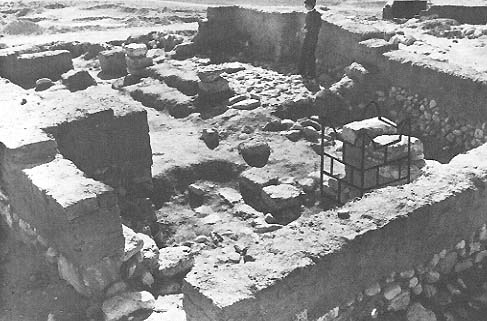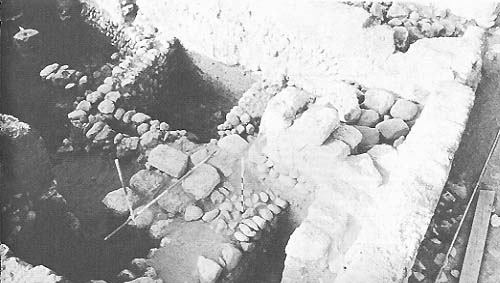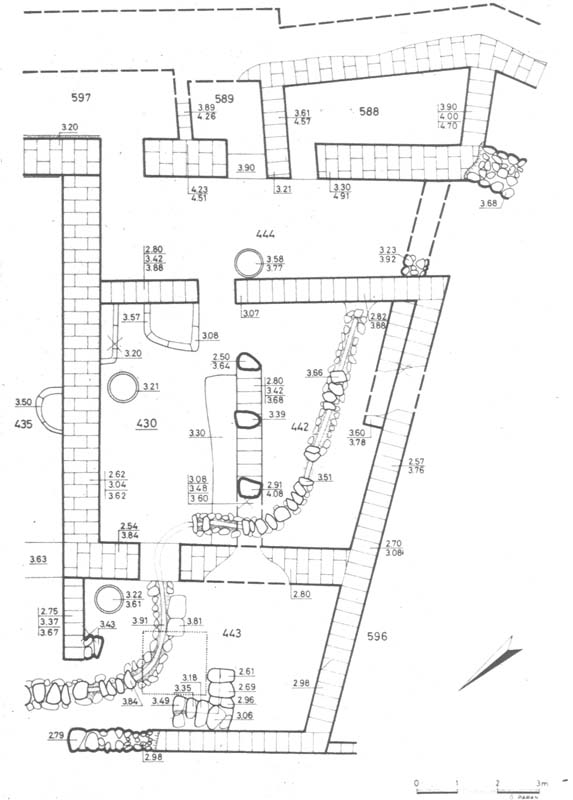Beer-Sheva Excavator Blasts Yadin—No Bama at Beer-Sheva
018

This is in response to your article in the March 1977 issue about alleged bama at Beer-Sheva (“Yigael Yadin Finds a Bama at Beer-Sheva,” BAR 03:01).
There is not one scrap of evidence, Biblical or archeological, in favor of Yadin’s theory.
The Biblical passage Yadin relies on speaks of a bama in Jerusalem and says that Josiah “broke down the high places of the gates” (2 Kings 23:8). The verse indicates that Josiah destroyed the buildings as well as the altars. But building 430 [the building at Beer-Sheva to the left of the city gate as one enters] was not destroyed until the entire city was burned by an enemy. Meanwhile, the altar had already been dismantled.
During the last season of excavation some additional stones of the altar were found outside the gate, buried in the newly laid rampart of stratum II. [Stratum II was the great Israelite city of the Divided Monarchy]. House 430 was built during the period of stratum II. The house was built after the altar was dismantled.
The gate in the Biblical passage is named after “Joshua the governor of the city,” a practice that makes sense for a city with more than one gate; but Beer-sheva had only one gate!
However, the grossest chutzpa of Yadin’s theory is his blatant emendation of the Biblical passage to make it refer to Beer-sheva and not to Jerusalem as it clearly does.
Many archaeological facts can be mustered to refute Yadin’s contentions. The following are the most salient ones and any one of them would be conclusive.
• There is no logic in building a staircase around an altar; the narrow steps would require some clever acrobatics to wrestle a sacrificial animal up to the altar hearth. The stairs obviously were intended to go up to the roof of House 430 (this was my view when I excavated them in 1970 and I did not agree with Aharoni that the steps led to the top of the city wall).
• The water channel begins inside the building and definitely had a channel leading from the roof to collect the rain water and to carry it under the cobblestoned court out to the outer vestibule where the steps were and on out to the street. The cobblestoned court, which Yadin wants to roof over, was obviously open to the sky. The drainage channel, like all the channels in the streets and courtyards of Beer-sheva, was for collecting rain water from the winter cloudbursts and directing it to the well outside the city gate. A similar roof drain was found in the building across the street from House 430. To drain the refuse from an altar, as Yadin suggests, into the city’s drinking system would be absurd.
• Perhaps the most important point of all is the size of the altar. Yadin has, whether intentionally or not, been guilty of a gross distortion in dimensions. The altar as presently reconstructed is 1.55 meters square, i.e. three Biblical cubits. It is also three cubits high. The plan of the House 430 (see drawing) shows how the three-cubit square altar would fill the courtyard by the steps. With the oven in the opposite corner, there would be no way one could get in and out of the building. A comparison of Yadin’s reconstruction of the altar in the angle of the steps (see illustration) with our photograph made last summer (see illustration) shows how deceptive Yadin’s drawing really is. In our photograph we have placed the small meter stick just where the corner of the 021altar would go according to Yadin. The two meter sticks are placed to indicate the three-cubit measurement. The difference is obvious. Furthermore, one must remember that the altar may have been bigger than even that size!

We have a reasonable theory of where the Beer-sheva altar did stand. This theory cannot be proven, but that does not in any way add credence to Yadin’s theory.
All Biblical precedents, that is, the tabernacle, the temple of Solomon, and the Ezekiel temple, indicate that the sacrificial altar stood in a courtyard on the eastern side of a building facing the rising sun. Archaeological precedent also points to the same situation, that is, the temples at Arad and Lachish and Beer-sheva (the latter two being Hellenistic in date) are on the eastern side of a building, facing the sun. A glance at the city plan of Beer-sheva reveals that there is only one place on the mound where a building faces due east. That is building 32, the Basement Building. We have demonstrated that the Basement Building was built just when the altar was dismantled and that its construction effectively obliterated the building that had been there before. The wood of the previous building may have been reused to build the Basement Building; only from this place did we obtain any olive wood! So we believe that the temple associated with the altar was destroyed to its foundations and that the Basement Building took its place. Those who cannot digest such a daring theory will have to find something better than a private house like our House 430 if they want to place the altar elsewhere.

Permit me to add a few remarks about the storehouses at Beer-sheva and Megiddo. The aisles in the Beer-sheva storehouses are certainly too narrow for horses to stand, and the fact that no individual horse could be taken out without taking out all the others should have been conclusive. But once archaeologists begin to play around with the Bible, nothing can stop them (see “In Defense of The Stables at Megiddo,” BAR 02:03). Horse experts have shown me that in these buildings, the cobble stones would be murder for the horses’ legs; there was no way to drain the aisles, much less clean them; and there was no way to adequately ventilate them; there would be no way to save the horses in case of fire. Chariot horses were usually stallions, and to tie them together in those narrow aisles would have been an invitation to sudden death. Yadin’s examples of stables from Ugarit and Amarna show only that a stable for the king’s team of horses could be part of a palace. They do not depict buildings like those at Megiddo and Beer-sheva. The contrast with the Megiddo and Beer-sheva buildings is conclusive. The latter cannot be stables for military units. It is high time we recognized that this unstable theory is nothing but the vain imagining of some archaeologists.
In conclusion, I wish to raise another issue that pertains to Biblical archaeology as a whole and to the BAR in particular. Biblical archaeology has for too long been simply a branch of theology; by that I mean that it depends not on observed facts but on the opinions of “authority figures.” Archaeological truth is most often just the subjective idea of some powerful personality. It is time we emancipated ourselves from this “Authority Figure Syndrome.”
The altar at Beer-sheva and the storehouses (would-be-stables) are only two cases in point. Not one rational piece of evidence supports either theory. But the prestige of popular individuals too often outweighs the facts. The same has been true of the date of Level III at Lachish, upon which our dating of Beer-sheva Level II depends. 056All the “authorities” from W. F. Albright to Kathleen Kenyon and G. Ernest Wright, et al. have been against Olga Tufnell [the associate director of the Lachish excavations of the 1930’s and author of the Lachish excavation report on the Israelite Iron Age city]. They said Lachish III was destroyed in 597 B.C. [by the Babylonians]. She said it was destroyed in 701 B.C. [by Sennacherib]
Now the recent excavations by David Ussishkin have thoroughly vindicated Tufnell’s view (which was strongly supported by Aharoni). Scholars who have seen Ussishkin’s new evidence with their own eyes are returning from Israel convinced that Lachish III was Hezekiah’s city destroyed by Sennacherib. The tide of opinion is finally turning. Not that we need a majority to establish truth. But this means that the altar at Beer-sheva was really dismantled before 701 B.C., most likely by Hezekiah; and, therefore, could not possibly be associated with Josiah and the Biblical verse emended by Yadin.
Theories by “authority figures,” especially by the forensic champion in the field, may make good copy for the BAR. But I wonder if it is really fair to the subject of Biblical archaeology to continue along as if archaeological truth were the sole possession of the cleverest debater?
This is in response to your article in the March 1977 issue about alleged bama at Beer-Sheva (“Yigael Yadin Finds a Bama at Beer-Sheva,” BAR 03:01).
You have already read your free article for this month. Please join the BAS Library or become an All Access member of BAS to gain full access to this article and so much more.
Already a library member? Log in here.
Institution user? Log in with your IP address or Username
